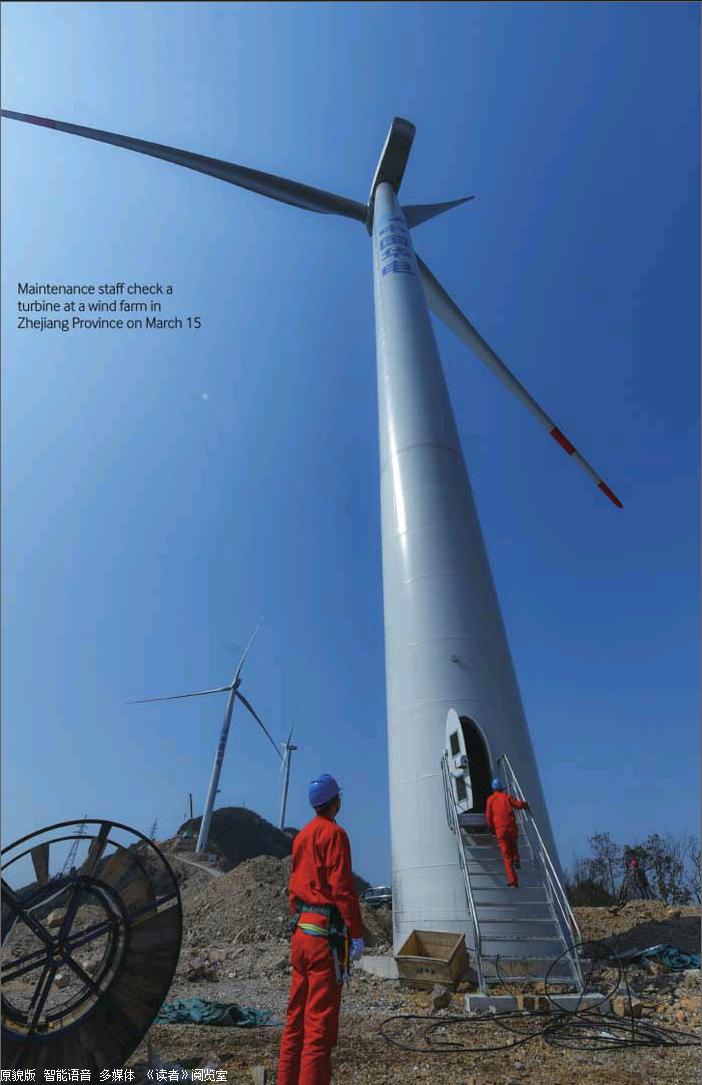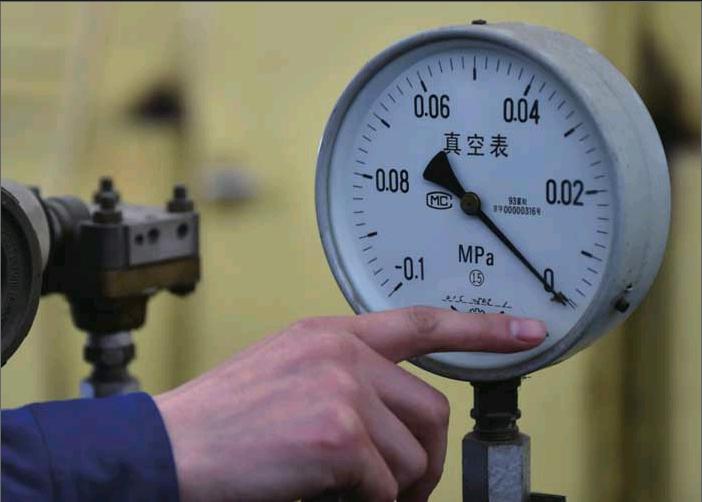TESTED THERAPY
2017-07-19ByZhengXinye
By+Zheng+Xinye


China has maintained rapid economic growth for over 30 consecutive years since it began reform and opening up in 1978. It has become the second largest economy in the world whose development grabs the worlds attention.
However, the Chinese economy still faces challenges, both domestically and externally. They include slowing growth, increasing risks of economic fluctuations, a widening income gap, a deteriorating environment and industrial overcapacity.
In response, the Chinese Government is adjusting its policy to adapt to the new trends in its economy. A vision of innovative, coordinated, green, open and inclusive development has been put forward while supply-side structural reform has been introduced to break the bottlenecks in modernization efforts. The focus is on pursuing steady and sustainable economic growth.
With all these measures, China has a clear guideline for economic work in the new period. Other countries could draw on Chinas experience in seeking solutions for their development and governance problems.
Governance experience
There are two major ways to pursue economic reform and transformation. One is the so-called Shock Therapy, based on neoliberal theories. It advocates establishing a market economy system and realizing private ownership and liberalization rapidly through radical reforms.
The other way is incremental reform, which is a gradual transformation from the existing system to a new one to avoid possible social disruptions during the process.
In the last three decades, China carried out reforms drawing on the experience of foreign countries and making a choice based on its national conditions. China acknowledges the role of the market in promoting development and is fully aware of the importance of technology and innovation in advancing economic growth.
China also agrees that globalization, free trade and foreign investment can provide impetus for economic prosperity. Regarding reform, China has taken an incremental approach, not only seeking GDP and industrial growth but also attaching importance to the quality of growth, upgrading of the industrial structure as well as balanced and inclusive development.
Policy upgrades
Take Chinas energy policy for example. In 1980, at the initial stage of economic development, energy consumption per capita in China is equivalent to only 37.4 percent of the world average and 14.7 percent of that of Organization for Economic Cooperation and Development (OECD) member countries.
At that time, a large part of Chinas energy consumption went to industrial development. Thermal power accounted for 80 percent of all power sources. The booming thermal power plants played an important role in supplying electricity for economic growth and social development.
However, the thermal power-based energy structure had a grave negative infl uence on the environment. Air pollution not only became a major public health concern, but also constituted a bottleneck to the sustainable development of the economy, society and the environment.
Under such circumstances, China began to adjust its energy policy and made efforts to optimize its energy mix and public services.
A series of steps were taken to diversify its power supply. Financial support for new energy development was increased, reform of the electricity supply system advanced, and the development and use of renewable energy promoted.
Relevant industrial policies were issued to change the composition of energy demand. For example, the development of emerging industries, especially low-pollution, energy conservation and environmental protection industries, was encouraged.
China has managed to promote the clean use of coal and the consumption of energy conservation and environmental protection products. It has also accelerated market-oriented reforms in the energy sector, weeded out low-effi ciency machines and equipment, and imposed environmental taxes. Environmental protection requirements have also been tightened.
Measures have been taken to ensure the sustainability of affected public services. These measures include subsidizing electricity prices for residents and aiding energy development in ethnic minority, remote border and poverty-stricken areas.
The Chinese Government attaches great importance to maintaining a balance between economic development and labor and environment standards. Currently, standards suited to the current stage of Chinas development have been established.
At the initial stage of its economic de-velopment, Chinas labor and environment standards were relatively low. Consequently, China could attract a lot of foreign investment and lay the foundation for its economic takeoff later in capital, technology and labor.
With some progress in economic growth, standards for labor and environment have been gradually revised. Regarding labor standards, China has made laws to increase the mandatory minimum wage, improve working conditions and strengthen workplace safety. On the other hand, emission standards have been raised and supervision and inspection of environmental protection measures strengthened.
China is aware that if it fails to upgrade labor and environment standards, its economic development would become insignificant. Worse still, slack standards would widen the income gap and aggravate environmental deterioration, eventually harming economic progress.
In the process of economic development, China has exercised dynamic regulation over capital control. While many developed countries and international organizations like the World Bank, the International Monetary Fund (IMF) and OECD advocate an unrestricted flow of capital, China has been insisting on imposing necessary controls.
The past experience has shown that some countries faced a crisis after they loosened control over capital rashly, such as Mexicos financial crisis in 1994 and the financial tsunami that hit Southeast Asia in 1997.
With effective control of capital, China has prevented capital drain, maintained the stability of its currency and averted potential financial crises.
The nation has undergone three stages of capital control and regulation. At the early stage, it was open to capital inflow and had strict control over capital outflow because it was short on foreign exchange. But after China joined the World Trade Organization(WTO) in 2001, its foreign exchange reserves began to increase continuously and control over capital was loosened gradually.
Then came cross-border investment. The domestic bond market was opened to foreign central banks and offshore renminbi clearing banks. The investment quotas for qualified foreign institutional investors and renminbi qualified foreign institutional investors were lowered. China also set up pilots for individual overseas direct investment.
Since the 2008 global financial crisis, the global economy has been sluggish and Chinas exports have dwindled on weak demand. China also faces an arduous task of rebalancing its economic structure. Against this backdrop, a series of measures have been taken since the end of 2015 to tighten capital control.
China has adopted dynamic control and regulation over capital flow based on changes in the domestic and international scenarios, taking a gradual, prudent and controllable approach.
No resting on laurels
The Chinese Government pays great attention to ensuring all citizens have equal access to development opportunities and benefits.
An economy can benefit a lot from an opening-up policy, such as higher GDP growth, industrial development, creation of more jobs and improved livelihoods. But at the same time, market openness will bring in risks, such as bankruptcy of homegrown enterprises due to competition from strong foreign rivals.
Therefore, providing relief to those suffering loss in the opening-up process and improving social welfare and income redistribution systems are essential to winning public support for the opening-up policy.
China has always been working to establish a nationwide market of labor force, products and production factors, as well as unify unemployment insurance programs.
Furthermore, it has established a transfer payment system through which the Central Government redistributes fiscal revenues among the local governments to provide relief to the underdeveloped. The system has been effective in narrowing the gap in public services between rich and impoverished areas, ensuring equal opportunity for people living in different regions.
The Central Government also directly finances some local projects, with the aim of ensuring necessary infrastructure in all areas, laying the foundation for further economic development of recipient regions and improving local peoples livelihoods. With these measures and policies, China has greatly alleviated the negative impact of globalization on Chinese society and people, which is conducive to securing public support of it.
Belt and Road impact
Thanks to its gradual approach in domestic economic governance, China has caught up with the developed economies and indeed, shot past many to become the second largest economy in the world.
More importantly, China has remained flexible and adjustable in exploring a governance approach suitable for the nation. The Chinese experience can be a point of reference for many countries in different stages of development.
In 2013, Chinese President Xi Jinping proposed the Belt and Road Initiative—the Silk Road Economic Belt and the 21st-Century Maritime Silk Road. China and many other countries have achieved remarkable progress in deepening cooperation and enhancing connectivity since the initiative was proposed.
There is also referential value in Chinas energy development. Many nations along the Belt and Road have small economies and are at a low stage of economic development. While energy is essential to economic development, many of these countries lack adequate electricity supplies. So they could be allowed a moderate development of thermal power plants and then gradually switch to new energy sources for industrial development, economic upgrade as well as public benefit.
Among the countries along the Belt and Road, 16 are not WTO members. It is hard for them to get sufficient funding from multinational financial institutions, including the World Bank and the IMF. Their infrastructure is also underdeveloped. The Belt and Road Initiative can bring them opportunities to boost their economic growth.
The prevailing anti-globalization sentiment in the West cant provide a solution for the current problems with the world economy or relieve the negative impact of market integration. It can actually do more harm than good. Working together to advance economic globalization, establishing free trade areas, reaching multilateral trade agreements and reforming global governance remain the right direction for the world.
